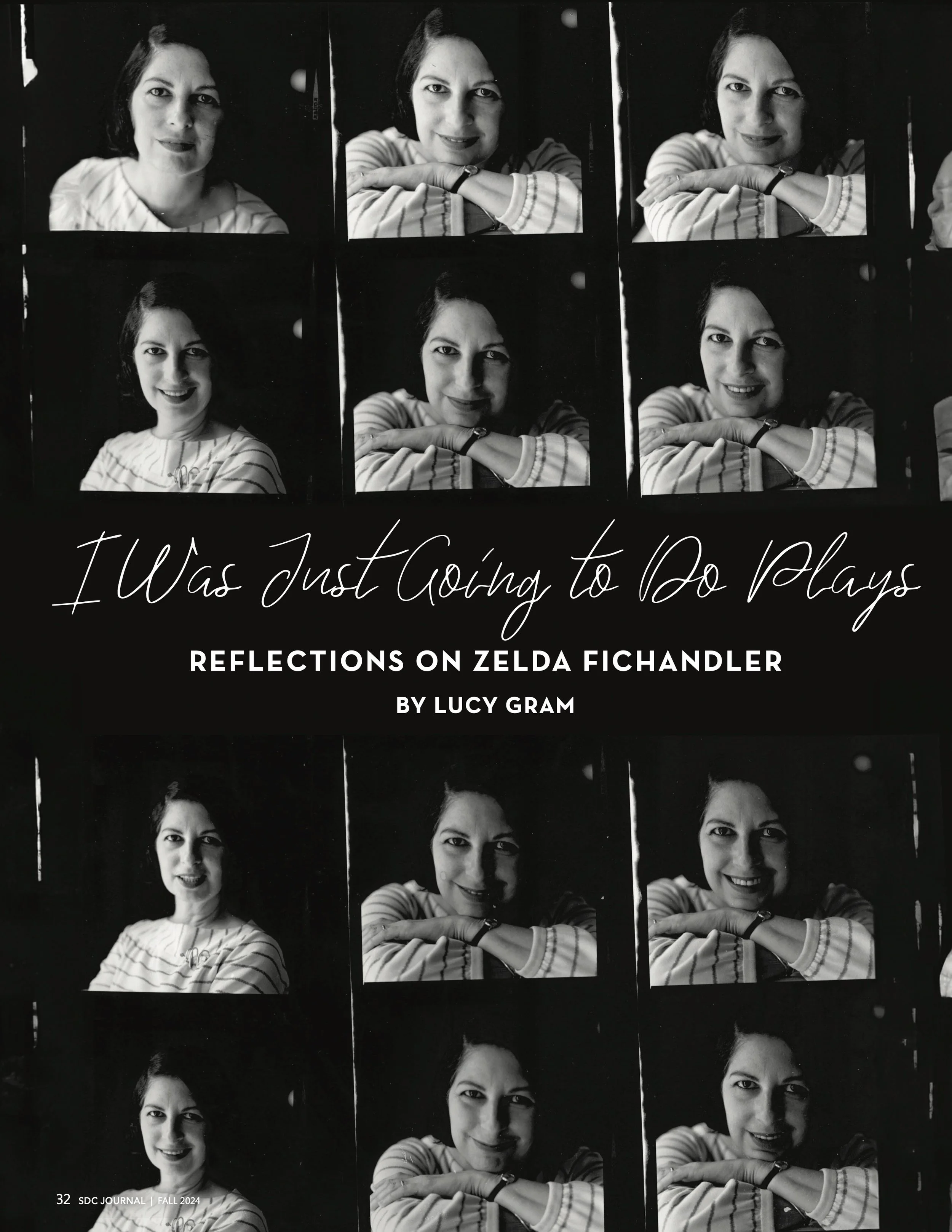Innovations by Kristjan Thor
In my role as Columns Editor for SDC Journal, I edited Kristjan Thor ‘s piece for the Innovations column, which highlights directors and choreographers _________. This was published in the Fall 2024 issue of the magazine.
The word “immersive” often confuses me. It’s hard to define. It’s very buzzy right now and although I hear it being bandied about, I often wonder how many of us have a clear definition of what immersive really means—especially as it relates to theatre, right now. I don’t say that to be mysterious or edgy; I say it because the fact that is it difficult to pin down is exactly the reason I am drawn to it.
My first experience directing something (intentionally) immersive was a modern “horror” adaptation of Maeterlinck’s The Blind in which I put audience members in the hull of a boat on the Hudson, in March, where ice flows scraped the outside of the boat. It was freezing, and we gave audience members parkas and blankets. The actors wore blinding contacts and memorized their blocking by feeling the rivets on the steel floor through their many layers of socks.
After the performance ended, we served the audience a meal consisting of only off-white risottos—all different in flavor but not in look. They were served in communal bowls. Thousands of clean spoons sat at the ready so audience members would take one bite and then retire their spoons, which meant everyone was eating together in a glorious primitive ritual. We drank cheap champagne, and everyone talked about the show—with the actors, with the designers, and most importantly, with each other.
Needless to say, after that experience I was hooked. Directing and producing The Blind (with my longtime creative partner, Josh Randall) became a totem for gauging what excites me, theatrically. The goal became to create affecting events in which the audience’s experience began the moment they pre-ordered the ticket.
At one point, we went so far as to use an automated call/text/email service, the kind that is used by pollsters and consumer reporting services, to send cryptic messages teasing the experience. Direct and bold audience engagement became my new mantra.
Over the last 20 years, I’ve directed plays, feature films, commercials, and events, as well as co-created Blackout, a long-running extreme-fear experience. Many of these gigs have been quite “classical” in their conception: from fourth wall sit-downs to activations at Comic Con. Many less so: from deeply intimate plays in a basement for micro audiences to filling a brownstone with conceptual art and tens of thousands of discarded toy dolls. There is, however, always a desire to give the work a feeling of being all-encompassing, regardless of the genre.
When I study up on the theatremakers of the past hundred years, I immediately see that immersive has long been with us, it just wasn’t articulated as such. One thing that has changed is what working “immersively” means in today’s media landscape. The live experience continues to become more rarefied and scarce as screens and augmented reality move to the front of our daily lives. I don’t bemoan this change; in fact, I see many creators capitalizing on it and doing wonderful things with this new technology.
I do, however, hope that it will make the personal and intimate ability that is inherent in immersive theatre stand out as necessary in the world. Simple and personal gestures will begin to mean so much more in a theatrical experience: sitting alone with an artist intimately whispering their story to me, drifting into the suspended belief that we are the only two people in the world at that moment; being surprised when an actor’s hand is laid gently on my shoulder, both comforted and challenged by its presence; standing in a room that collapses into perfect and total darkness, left only with my thoughts, both terrified and exhilarated.
These are examples of some of the microcosmic moments that have stood out to me as simple, elegant examples of what immersive events can afford our audience. It’s not rocket science, but working with actors and designers to make these experiences present and necessary is what allows the aforementioned moments to stand out.
One thing I’ve come to understand is that performing in an intimate immersive piece requires a whole different set of skills than being on stage. Often actors who have worked with me “experientially” say it can be hard to go back to the stage because the feedback from the audience is not immediate, as it often is in immersive events. Sometimes actors can quite literally feel the audience react. That type of interactivity can be intoxicating.
With AI set to supercharge the output of consumable media, I think these live, human-driven experiences I’ve been describing will become more and more valuable. It is precisely because these types of events are not scalable that they resonate with audiences. Immersive theatre may also be an ideal foil to our relationship to our “personal devices,” ironically, because it is just that: personal.
Kristjan Thor is a critically acclaimed director of film, theatre, and immersive experiences based in New York. Over the course of a 22-year career, he has directed and produced two feature films and many theatre, short film, and video projects that have been recognized internationally.






